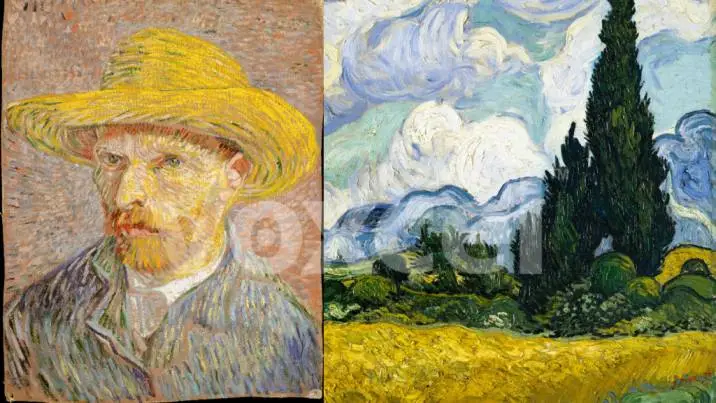- October 25, 2024
Vincent Van Gogh Famous Failures That Were Successful
- November 13, 2024
- in Life

One of the most well-known and well-liked painters of all time is vincent van gogh famous failures that were successful. Apart from his iconic ear amputation, Van Gogh's artwork has come to epitomize post-impressionism. His use of vivid colors and subjective viewpoint gives his paintings, like "Sunflowers," energy and contributes to a change in the way the world perceives art.
But in reality, Van Gogh suffered from financial difficulties and obscurity during his brief life, selling just one painting during that period. For the most part, he thought of himself as a failure.
Exploring the Success Hidden in Van Gogh's Failures

Read Also: 9 Signs You're Going to Be Successful in Whatever You Do
1. Before claiming to be an artist, Van Gogh tried a variety of different occupations.
On March 30, 1853, Van Gogh was born in Groot-Zundert, Netherlands. He experimented with a variety of occupations before painting, such as preaching, teaching, and art dealing. He found them unsatisfying and, at the age of 27, he began painting without much official instruction. In 1880, he declared himself an artist in a letter to his brother Theo.
Then, in search of his creative vision, he journeyed across Belgium, Holland, London, and France.
2. Farmers and peasants served as models for Van Gogh when he initially started painting.
Later on, he painted himself, flowers, and landscapes, primarily because he couldn't afford to pay his models. To save even more money, he painted over a lot of his paintings rather of vincent van gogh famous failures that were successful.
Van Gogh frequently depicted poverty and financial difficulties in his early paintings, which had a muted color scheme. He didn't begin employing the vibrant colors for which he is renowned until much later in his career.
3. For the most of his life, Van Gogh struggled with mental illness.
Van Gogh spent a lot of time in mental facilities, and there is evidence that he suffered from manic depression, psychotic episodes, and delusions.
Numerous contemporary psychiatrists have proposed a number of potential diagnoses, such as epilepsy, bipolar illness, syphilis, schizophrenia, and porphyria. In fact, it is believed that Van Gogh had temporal lobe epilepsy, a long-term neurological disorder marked by frequent, unprovoked seizures.
2. Farmers and peasants served as models for Van Gogh when he initially started painting.
Later on, he painted himself, flowers, and landscapes, primarily because he couldn't afford to pay his models. To save even more money, he painted over a lot of his paintings rather of purchasing new canvases.
Van Gogh frequently depicted poverty and financial difficulties in his early paintings, which had a muted color scheme. He didn't begin employing the vibrant colors for which he is renowned until much later in his career.
3. For the most of his life, Van Gogh struggled with mental illness.
Van Gogh spent a lot of time in mental facilities, and there is evidence that he suffered from manic depression, psychotic episodes, and delusions.
Numerous contemporary psychiatrists have proposed a number of potential diagnoses, such as epilepsy, bipolar illness, syphilis, schizophrenia, and porphyria. In fact, it is believed that Van Gogh had temporal lobe epilepsy, a long-term neurological disorder marked by frequent, unprovoked seizures.
4. He did not cut off his entire ear, only a portion of it.

Despite their divergent styles, Van Gogh and his close friend Paul Gaugin sometimes painted together after meeting in Paris in 1887. At Christmas 1888, Gaugin and Van Gogh were both staying together in Arles. Van Gogh tried to use an open razor to attack Gauguin during one of his seizures. In the end, Vincent severed a portion of his own ear, but not the entire ear as is frequently said.
It is then said that Van Gogh wrapped the half severed ear in paper and gave it to a sex worker at a brothel that he and Gaugin frequented.
The veracity of this account is still up for debate; in 2009, two German historians proposed that Gauguin, a skilled fencer, had actually used a saber to cut off a piece of Van Gogh's ear during a fight. Van Gogh agreed to conceal the facts in order to get Gaugin out of jail because he didn't want to lose Gaugin's friendship.
5. During his time in an institution, Van Gogh produced his most well-known piece, "The Starry Night."
Van Gogh willingly checked himself into the Saint-Remy-de-Provence institution in order to recuperate from the ear-cutting episode that had been caused by his psychological breakdown in 1888.
The permanent collection of the Metropolitan Museum of Art currently includes "The Starry Night," which portrays the scene outside his bedroom window. In contrast, Van Gogh did not think this picture was very nice.
6. Hundreds of letters documenting Van Gogh's existence
During his career, Van Gogh sent more than 800 letters to his brother and close friend Theo, as well as to his fellow artists Emile Bernard and Paul Gauguin. Historians have been able to arrange the majority of the letters chronologically, despite the fact that many of them are undated, and together they provide a thorough source on Van Gogh's life.
Van Gogh and his brother Theo exchanged more than 600 letters, which document both Van Gogh's creative beliefs and theories as well as their enduring relationship.
You May Also Like: 5 Ways to Stay Strong When Life is Going in the Wrong Direction
7. Van Gogh produced almost 2,100 pieces of art in ten years, including about 900 paintings.
In the final two years of his life, Van Gogh produced a large number of his paintings. Even though he started painting relatively late in life, faced financial difficulties, suffered from mental illness, and passed away at the age of 37, his body of work was larger than most painters finish in their lifetimes.
His production was so large that it would be equivalent to producing almost a new piece of art every 36 hours.
8. Van Gogh is believed to have shot himself on July 27, 1890, while painting in a wheat field near Auvers, France.
He was able to walk back to his Auberge Ravoux home after the incident, where he received treatment from two medics who were unable to extract the bullet since there was no surgeon on call. A wound infection claimed his life two days later.
However, because no gun was discovered and no witnesses were there, this fact is hotly debated. Another possibility put out by Steven Naifeh and Gregory White Smith was that he was unintentionally shot by adolescent guys with whom he had gone out drinking, one of whom was a frequent cowboy and could have possessed a broken firearm.
FAQs - Vincent Van Gogh Famous Failures That Were Successful
What were Vincent van Gogh's failures?

As previously stated, Van Gogh had other goals for his profession before becoming an artist. He shared our desire to discover his actual purpose and passion. As a young adult, he worked as a preacher in the Belgian Borinage, an art seller, and a bookshop clerk. Unfortunately, he was unsuccessful in all of his endeavors.
What happened to Van Gogh's art after he died?
In 1962, 'the Engineer' gave the vincent van gogh famous failures that were successful Foundation ownership of the Van Gogh collection with the approval of the Dutch government. In exchange, the State agreed to construct the Van Gogh Museum and then guarantee that the collection would always be available to everyone.
What did Van Gogh's last letter say?
"Alright, my justification has half-foundered in my work, and I risk my life for it." However, what are you able to do? Final phrase of the incomplete letter to Theo, with a notation in Theo's hand: 'The letter he had with him on 27 July, the day of the accident'.





